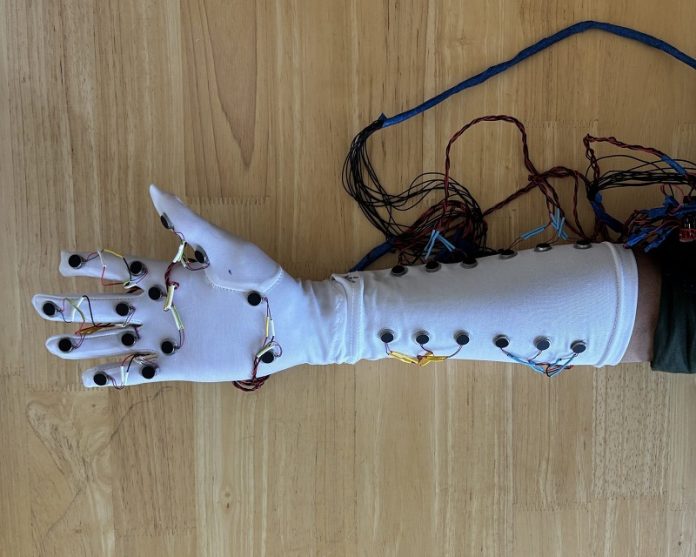
Scientists at the University of Southern California (USC) have created a new virtual reality system that lets people feel physical touch, even when they’re far apart.
This breakthrough technology adds the sense of touch to digital interactions, making them more real, emotional, and engaging.
It could change the way we connect in areas like remote work, online learning, health care, and long-distance relationships.
Touch plays an important role in human life. It helps build trust, reduce stress, and create strong emotional bonds.
But in today’s digital world—where many of us communicate through screens—touch is often missing.
To help solve this problem, researchers at USC’s Viterbi School of Engineering designed a wearable system that lets users feel handshakes, pats, and squeezes in virtual reality (VR).
The system includes gloves and armbands with tiny vibration motors that give realistic feelings of pressure and movement.
When someone reaches out for a virtual handshake, the other person can actually feel it. Up to 16 people can be in the same virtual space at once, with full-body avatars that mirror real-life movement.
Unlike a video call, people in this shared VR environment can walk around, interact with objects, and even pass each other a virtual cup.
In user tests, participants said that being able to feel these virtual gestures made the experience more fun, real, and emotionally meaningful.
They reported a stronger sense of social connection and presence. The research also found that the speed of gestures and type of vibration changed how people felt emotionally during the interactions.
Heather Culbertson, a USC professor who led the study, said this type of technology could help reduce feelings of loneliness and “touch starvation” that many people feel in today’s digital world.
Her team worked across many areas, including computer science, psychology, and engineering, to make sure the system not only worked well but also felt natural and emotionally engaging.
Doctoral student Premankur Banerjee, the study’s first author, shared that this project was personal for him. After spending years away from his family, he wanted to create something that could help people feel close again, even from far away.
While this technology won’t fully replace the feeling of being with someone in person, it adds something very important to virtual communication.
It could let hospital patients feel a loved one’s touch, help remote workers and students feel more connected, and make long-distance relationships more comforting.
This new system shows that even in a digital world, the power of human touch still matters—and now, we can begin to bring it back.



